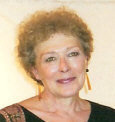Voices from the Neighborhood
MANHATTAN
 Zella Jones: NoHo Historic District; NoHo East; and NoHo Extension Interviewed October 18, 2010 by Susan Hopper, HDC board member
Zella Jones: NoHo Historic District; NoHo East; and NoHo Extension Interviewed October 18, 2010 by Susan Hopper, HDC board member
——————————————————————————————————
How did you get started with preservation? I worked with Tiziana Hardy in the early 90’s, just after I joined the NoHo Neighborhood Association, when she launched a campaign to seek NoHo. By the time NoHo 2 became a possibility, I had been elected president of that association and became much more involved. There was pending development in the area that we hoped would be included in the parcel. At the time of the NoHo Extension designation, I had been asked to join Community Board 2 and was not only very involved in negotiating the NoHo extension area but became much more familiar with landmarking overall through the CB 2 Landmarks Committee and its hearings. The NoHo Neighborhood Association has since dissolved, but I have maintained a website for it for about 10 years–www.NoHomanhattan.org. It features, among other things, landmarks, history and the three designation reports. For the past three years I have served on the Chinatown Working Group, in which historic preservation is a regular conversation as the group creates a 197a zoning plan they will bring to the city for adoption.
How has the Historic Districts Council helped? We began a collaboration with HDC in the mid-1990’s. HDC was integral in guiding us through the Landmarks Preservation Commission’s process, helping us figure out the strong points to play and how to reach out to various thought leaders to make our case. Then we were fortunate to get NoHo 2, a small parcel, designated. HDC advocated for landmarking a larger parcel. The guidance and advice we got from Simeon and board members was very, very helpful and I am sure their advocacy was instrumental in gaining that designation. The last designation, NoHo 3, was in 2007-8, or the NoHo extension. Important lots initially had been left out. Simeon and board members did background lobbying among City Council members, and we were able to add a few parcels to that scheme. HDC provided guidance and shared information during that process—we knew which Council members were going one way or another and we changed a few minds. I don’t think NoHo would have had as cohesive a district had it not been for HDC’s aid.
HDC also gave major support for the Skidmore House on East 4th Street near the Merchants House Musaum. The property owners at the time had let it deteriorate and a combination of advocacy by local people and HDC, with input from its legal advisory group, brought it to the attention of LPC, which brought a lawsuit. I also worked with John Jurayj and other board members on the Great Jones Hotel where the developer had ignored landmarking and built up more than allowed. John advocated for modification and we got LPC to look at it again.
What have been the biggest changes in your neighborhood as a result of your preservation efforts?
Well, we are certainly gentrified! But, in our case, being such an architecturally and historically diverse neighborhood, I think it has helped to preserve a unique character with which everyone is pretty comfortable. There continues to be new development, and variances have allowed taller construction than had existed previously; but had it not been for landmarking, we would not have been able to control the context of the neighborhood. For example, at 41-43 Bond Street, where two buildings were demolished prior to landmarking, the developer came in knowing that the design would have to complement the neighborhood. Over the better part of a year, we worked with HDC and LPC refining a highly contextual design that was ultimately approved. The developer sold the project before construction began to a new development group, which, as a result of the community agreements and LPC approvals, adopted the project in its entirety.
Eventually there were some modifications in materials and some exterior details on Bond Street that they felt would enhance the energy efficiency and aesthetics of the building. It was then that I introduced them to Simeon for a consultation about how realistic these alterations might be and what other considerations might have to be included to gain LPC approval. Simeon’s advice was right on the money: his observations regarding the bluestone exterior, the modified window insets and the rooftop plan that incorporated more energy-efficient HVAC mechanicals were approved with no controversies and actually enhanced contextuality. Though, perhaps a ‘soft assist’, it resulted in a big assist! To get such a fine result was fabulous. We continue to encourage property owners and developers to go to HDC in a non-adversarial capacity and ask advice for contextuality and improvement in the neighborhood. It has resulted in highly successful collaborations!
Advice for other neighborhoods interested in an historic district? HDC’s role as an advisor and advocate really shouldn’t be ignored. Their large body of knowledge about landmarks and the landmarking process throughout New York City is invaluable; so is their understanding of all the variations thus far approved, the conditions that precipitate them and the precedents that are established, good and bad. As far as I am concerned, HDC is a resource anyone approaching LPC should utilize, including property owners who may face hardship in complying with Landmarks regulations.
Updates: To follow preservation issues and the designation of NoHo historic districts, check out the history section on the website: www.NoHomanhattan.org